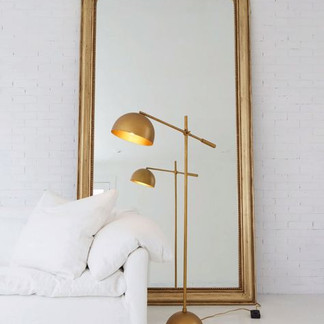#mondaymood: all that glitters is not GOLD.
- Laura Antoni

- Jul 27, 2020
- 3 min read
The colour gold is the colour of success, achievement and triumph. Associated with abundance and prosperity, luxury and quality, prestige and sophistication, value and elegance, the psychology of this colour implies affluence, material wealth and extravagance.
Gold in its physical state, by its very nature, denotes wealth and prestige in every country, culture and market in the world today - it is probably the most valuable and easily traded commodity available in the global market place.
This colour is linked to masculine energy and the power of the sun, compared to silver which is associated with feminine energy and the sensitivity of the moon.
Optimistic and positive, gold adds richness and warmth to everything with which it is associated - it illuminates and enhances other things around it.
At the uppermost level, this is a colour which is associated with higher ideals, wisdom, understanding and enlightenment. It inspires knowledge, spirituality and a deep understanding of the self and the soul.
In the meaning of colours, gold is generous and giving, compassionate and loving, the benefactor or patron, sharing its wisdom, knowledge and wealth with others.
Gold is the colour of the winner - first place medals are always in gold, silver is second place.
Confident, passionate and eye-catching, gold draws attention to itself.

You’ve probably not given it much thought, but the reason why gold is yellow (or rather, golden) is deeply ingrained in its atomic structure — and it’s because of something called relativistic quantum chemistry. Simply put, gold’s electrons move so fast that they exhibit relativistic contraction, shifting the wavelength of light absorbed to blue and reflecting the opposite colour: golden.
If we want to understand why gold is yellow, we first have to understand what colour is in the first place. White light — what we usually simply call light — is a mixture of a lot of colours, all with their individual wavelength. When light bounces off any object, it is reflected, scattered, and absorbed (to some degree). So a wavelength might arrive at the object, but another one may leave it. This is the (simplified) mechanism that is responsible for giving things their colour. The human eye absorbs the wavelength and transforms it into colour. It should be noted that objects have their own physical colour, but the colour our eyes see might be somewhat different, depending on a host of contextual (i.e. viewing angle) and biophysical cues (i.e. any disability).
Create the colour gold by mixing 100 parts yellow, 3 parts magenta and 1 part blue. Gold is commonly represented in art by the colour yellow or by the colour with a bit of orange or brown mixed in. The signature shininess of gold is actually a property of the metal and not colour; it is not possible to achieve a metallic sheen by mixing colours. In order to achieve a metallic look, it is necessary to mix in an additive, such as gold powder. The colours achieved by these pairings do not as closely resemble gold as the aforementioned mixture, but they do successfully convey the idea of gold.
Gold isn’t just a colour, it’s an effect. Gold without the effect of reflection is just yellow.The American Heritage Dictionary defines the colour metallic gold as "A light olive-brown to dark yellow, or a moderate, strong to vivid yellow."
Of course, the visual sensation usually associated with the metal gold is its metallic shine. This cannot be reproduced by a simple solid colour, because the shiny effect is due to the material's reflective brightness varying with the surface's angle to the light source.
In interior design, golden accents can give a room elegance and warmth. Although metals seem to be 'cold' textures, the hues and colours from the golden finishes have the properties to be. able to warm up and make any room more cosy and luxurious.




















































































Comments